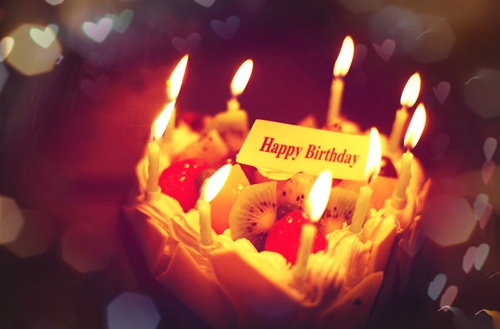
谁有关于一带一路的演讲稿,有英文的更好,五分钟左右,长一点也没事,谢谢。
World leaders gathered in Beijing over the past two days to hear China’s plan for global trade: the One Belt One Road initiative. Nearly 70 countries and international organizations have signed up for the mega infrastructure project, said president Xi Jinping at the close of the summit today (May 15), but others still have no idea what it is. The next gathering in Beijing is slated for 2019.During his speech at the opening of the “Belt and Road” forum, Xi pledged at least $113 billion in extra funding for the initiative, and urged countries across the globe to join hands with him in pursuit of globalization.“We have no intention to form a small group detrimental to stability,” Xi said. “What we hope to create is a big family of harmonious co-existence. ”What the heck is it?It’s all about building massive stuff, mostly around transport and energy: roads, bridges, gas pipelines, ports, railways, and power plants.Proposed by Xi in 2013, the program is an estimated $5 trillion (pdf) infrastructure spending spree that spans 60-plus countries across Asia, the Middle East, Europe, and Africa.Hailed by Xi as a “project of the century,” the plan fits into his bigger narrative that China is setting an example of globalization, filling the void left by the US under Donald Trump’s “America First” policy.What’s with the name?It’s a mouthful. The “One Belt” part of it refers to the Silk Road Economic Belt while the “One Road” refers to the 21st-century Maritime Silk Road. Jointly, they’re meant to be a revival of the ancient Silk Roadtrading routes. Don’t get too tied to OBOR: China might be toying witha different acronym. Meanwhile, one writer noted it’s an even more unfortunate acronym when you have a Belt and Road Forum, or BARF. A few people are mixing and matching for OBOR\\\/BRI.Who’s in and who’s out?China says the project is open to everyone, but it has also identified 65 countries along the Belt and Road that, since the early stages of the proposal, it has insisted will participate in the initiative—whether they’ve confirmed it themselves or not.Together, the 64 nations plus China account for 62% of the world’s population and 30% of its economic output (pdf).Nevertheless, only 20 of those nations sent their heads of state to the OBOR summit over this past weekend, and most of them are smaller Asian countries that are economically dependent on Beijing. A total of 52 nations are confirmed to have had some level of participation in the forum.Those included the United States and North Korea. Matthew Pottinger, senior director for Asia at the National Security Council was the US representative at the forum, despite a previous plan to send a low-level Commerce Department official. Pottinger showed up in Beijing soon after the Trump administration announced a major agreement with China on trade, which entails an endorsement of the Belt and Road Initiative.The North Korean delegation at the forum, led by minister of external economic relations Kim Yong Jae, was overshadowed by his nation lobbing yet another ballistic missile May 14, in reaction to calls to rein in its weapons program.Chinese planners had reportedly hoped for at least some top Western leaders to attend the OBOR forum, including British prime minister Theresa May, in order to burnish the plan’s credentials. Instead, the UK, Germany and France sent their lower-ranking officials to Beijing.India was absent. The country has boycotted the Belt and Road Intiative, mainly due to concerns over the China-Pakistan Economic Corridor, a key part of the initiative that runs through disputed Kashmir.How’s it going so far?China has never published any comprehensive list of all OBOR-related projects or deals. The initiative is vaguely conceived and described at the first place, perhaps to make it easier to bundle anything it wants into it. As leading players in the initiative, about 50 Chinese state-owned companies have invested in nearly 1,700 OBOR projects since 2013, said the Chinese government days ahead of the Beijing forum.The flagship projects include the $46 billion China-Pakistan corridor, a 3,000km high-speed railway connecting China and Singapore, and gas pipelines across central Asia. The Belt and Road initiative has also entered regions as far as New Zealand, Britain and even the Arctic.Nearly $500 billion worth of projects and M&A deals were announced in 2016 across seven infrastructure sectors including utilities and telecoms in OBOR countries, a decline from 2015, according to a report from audit firm PricewaterhouseCoopers (pdf) in February. A third of the projects and deals were in China, PwC said, and the rest spread across other OBOR nations.Breaking them down, PwC found that the value of newly announced projects has been flattening, going up just 2.1% in 2016 from the earlier year to about $400 billion. And M&A deals in 2016 fell 49% in dollar value from the previous year, PwC noted, citing stricter capital controls amid a weakening yuan.By another gauge, foreign direct investment from China to other OBOR nations went down 2% in 2016 year-over-year and has dropped an additional 18% (paywall) so far this year, according to the Financial Times, citing commerce ministry data.Where does the money come from?The $113 billion in extra funding Xi promised will be disbursed through three different sources. These include the state-owned Silk Road Fund, which was officially launched in 2015 with $40 billion of initial capital, and two Chinese policy banks, the China Development Bank and the Export and Import Bank of China. Some analysts have warned (paywall) that some OBOR projects financed by these banks may lose money–maybe a lot of it.Two multilateral institutions led by China, the Beijing-based Asian Infrastructure Investment Bank (AIIB)—with its registered capital of $100 billion—and the Shanghai-based New Development Bank—with $50 billion starting capital—are also major financiers of the initiative. In 2016, for example, the AIIB approved $1.7 billion in loans to nine development projects along the Belt and Road.Chinese lenders are also powering the new Silk Road plan. Louis Kuijs, head of Asia research at Oxford Economics, estimates that the annual Chinese lending to other OBOR countries stands at around $130 billion(paywall) in recent years—and the bulk of that is from commercial banks.Speaking at the Beijing forum, Zhou Xiaochuan, governor of the Chinese central bank, has pledged (link in Chinese) to help domestic banks fund more OBOR projects in the years to come. He added that China is also seeking financial cooperation with other OBOR nations, as its own resources are limited.China is also hoping that other countries and funds will pitch in.
一篇演讲稿
我从小就爱读书,书给予我无尽的乐趣和启示。
一本好书不仅可以让人学到知识,还可以陶冶情操,懂得怎样做人。
我读过许多育人的书,如:《成语故事》中的《克己奉公》就讲了祭遵为官清廉,严格约束自己,一心一意为公这么一个故事。
通过这个故事使我羞愧以前自己只顾自己,不顾别人的行为。
所以从此我学会了关心集体,爱护公物,严格约束自己,时时心中想着别人。
书里的知识无穷无尽啊
最近我读了《小学生简快作文》后,收益非浅,书中有很多美好的童话,性格各异的人物,奇异的幻想,迷人的景物,新奇的故事,有趣的百科知识,这些都是我们不可缺少的。
读书,充实了我们的大脑,带领我们进入新奇的知识领域,受到了很多的启发。
正如高尔基说的:“书是人类进步的阶梯。
”我们在学校学习的知识大多也是从书本上得到的,如果没有书,人们将会变的孤陋寡闻,如果没有书,就不会有这么发达的科技,所以书是人类最好的精神食粮。
再如:《木偶奇遇记》这本书读后给人以很多的启发,特别是做人方面。
它讲了一个木匠把一块会说话的木头作成了木偶,而这个木偶十分贪婪,做人很不诚实,当他受到惩罚改正错误后,才变成了一个真正的人。
这个童话故事的中心思想很明确,就是为了表达贪婪的可怕,教育我们做一个好人,一个对社会有用得人。
不止这些,读科技类的书还可以让我们了解到现代科技的发达,社会的进步;读历史类的书还可以让我们知道过去的事情。
读书是我们学习知识的主要途径,读书不仅让人获得知识,还教育我们怎样做人,为了做一个对社会有用得人,今后我要多读书,读好书。
一带一路的作文(1000字)
四想四对照很荣幸,今天能在这里与在座的优秀同学和老师一起探讨4想4对照的问题首先,我觉得在探讨前应该确定一下我们的角色
第一,我们是无收入者。
我想在做同学都未曾打过零工吧
我们衣食住行离不开生我们养我们的父母
第二,我们是一名二中人。
教化我们,指引我们走向美好明天的是东阳二中的老师;规范我们,安排我们的是二中的制度
我们永远记录在二中
第三,我们是祖国的栋梁(不至于还是祖国的花朵吧)
是我们在学生这个职位上,为祖国刻苦奋斗着,是我们,为祖国60华诞更添一份色彩,高喊着“五星红旗,你是我的骄傲”。
明确了我们各自的角色,再来探讨“四想四对照”会更融入我们的情景吧
对于我们的父母,抛开那些‘掌上明珠’,‘望子成龙’之类的词汇,我们更是父母亲完成他们年轻时的遗憾的寄托
在这点,我有迷惘过,也曾经与他们争论过,但随着年龄的增长,其实,我和父母的期望是一致的
假若没有听父母的劝诫,我们何以能凭着一穷二白的知识面实现自己的理想;假若没有听父母的劝诫,我们怎样积极向上,明确自己人生目标呢
所以,我决定,一定尽自己的努力,在这条书海之路能走多远,走多远。
毫无疑问,我对的起父母。
父母也是我最坚强的后盾
作为一名二中人,我日渐为这个身份自豪
不说二中近年来取得了那么多可喜成绩,最贴近我们学习和生活深深让我感受到,我们的老师为了给我们创造好的学习氛围花了多少心血。
那校规就是最好的见证
礼貌待人。
注重仪表举止文明。
严守校纲。
爱护公物。
艰苦朴素。
孝敬父母。
遵守公德。
做合格的二中人不难,但要做优秀的二中人,必须从小事做起
我买饭不插队,我洗脸漱口时,及时关上水龙头。
遇到老师,我定会我们著名校友黄强,他是飞豹战斗机和预警2000飞机的主要设计主持者,为国家国防建设做出了杰出贡献。
此外还有许湘君,潘德炉,成赢桥等。
面对人才辈出的二中,我由衷感到自豪。
作为同是二中人的一员,我正努力着为祖国,为二中尽一份自己的力量。
有位校友曾说,‘搞科研的要静下心来’正如他所说,学习不也要静下心来吗
急功近利,三天打鱼两天晒网,这些心态不仅对学习有害,对生活乃至以后的个人发展都会产生不好的影响。
静下心来,冷静看待成功和失败;静下心来,发扬君毅精神,最求卓越。
这是我正在做的,也是我努力培养的一种心态。
鉴于有同学说,我们只是高中生,只要一心钻到学习里就是一名好学生。
我以为,一味死读书,对于生活周围的大事漠不关心,那并不是一名优秀的高中生。
我们身处社会,就应对发生在当今社会的事有所了解。
虽然我们不能对身边的大事有所影响,但是,作为二十一世纪的青年,我们就应该胸怀壮志,心系天下。
现在社会需要自主能力强,有创新精神的人才。
学会心系天下,不仅让你了解全球大事,也会在一定程度上懂得社会的艰难,珍惜学习的不易。
高中,本就是我们树立价值观人生观世界观的时期,假如你漠视了三观的重要性,那和一架学习机器有什么区别呢
风声雨声读书声声声入耳,家事国事天下事事事关心。
学习使我们学生的天职,固然重要,对于时事,我们也需要有所关注。
这样既满足社会对人才的要求,也为你的人生奠定了基础。
求一篇演讲稿
一个漫长的暑假已过,迎来的是一个的秋天.在这丹桂飘香,收获的季节里,新的一学期始了,迎着早晨的第一缕阳光,我们又重新回到美丽的校园,开始了新一学期的征途. 在过去的旅途中,无论你是否拥有过欢笑,拥有个阳光,这都已成为永远的记忆,加上一把锁将它封闭起来吧!摆在我们面前的一切都是新的,你看见了吗?新的生命正在破土而出.由于现实的残酷,我们将化身为一个个骑士,抹掉胸口上的创伤,拿上我们的武器,整装待发,新学期的目标你确定了吗? 也许你的目标是考上自己理想的高中,也许你的目标是追赶上某位同学,目标可以不同,但是绝对不能没有,更重要的是有了目标后,我们一定要为此付诸行动,全力以赴,这些没有必要拿张纸唰唰大笔抹几下,但是在你的头脑中一定得有个奋斗目标,有个全套打算,没有目标就是没有终点,一个连自己终点,都不知在哪里的人,将如何完成这段旅程,当然这一路不会是一帆风顺,它总会有让你黯然流泪的时候,不过阴天之后总会是晴天的,因为你是一个骑士,拥有骑士精神,勇敢的骑士,不会被任何困难打倒! 那么,我们需要一步一个脚印,踏踏实实地做学问 ,书山有路勤为径,学海无涯苦作舟。
让我们共同探索未知世界,向着自己的目标,奋力前进



